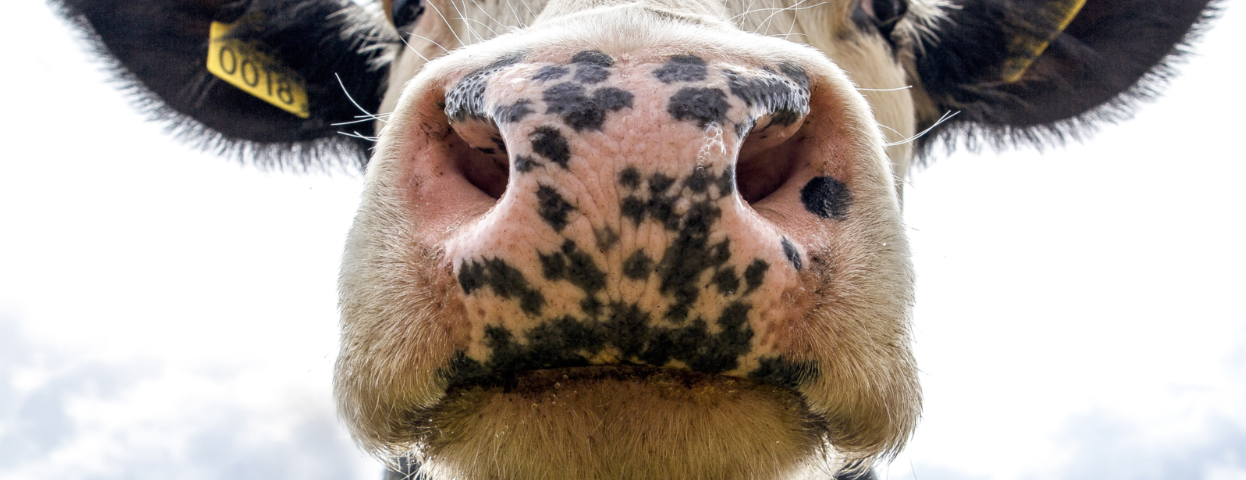In the Dutch Dairy Challenge, third-year bachelor and master students from different disciplines have reflected on the future of dairy farming. In this 100-day course of 6 ECTS learners tackled the question:
“How can dairy farms still exist in the future, in a healthy, sustainable and economically feasible way, from the perspective of the animals, the environment, as well as the farmers?”

While working on this challenge, participants are stimulated to employ a transdisciplinary approach. Solutions could combine technical, political, economic, social and sustainability disciplines. The proposed solutions could take the form of a prototype (e.g. a device, platform, tool), a system or a policy, depending on the expertise of the team and their chosen direction.
Learning outcomes
After successful completion of this course learners are expected to be able to:
- Identify a relevant challenge related to sustainable dairy farming and describe it from a scientific perspective
- Gather and analyse information from academic and non-academic resources, and use that information to build a logical narrative towards a clearly-defined objective
- Design, plan, and describe an approach that is scientifically sound and achievable within the societal, economical, and environmental constraints
- Evaluate the risks, feasibility, and expected societal impact of the proposed project in a critical, realistic and convincing way
- Reflect on personal learning goals, based on their own expertise, and that of other members and stakeholders.
Learning journey
The educational design is divided into three different phases:
- The core team facilitated weekly learning activities for 2.5 hours with a predefined timeslot.
- The learning community was responsible for acquiring and sharing relevant expertise.
- Learners had to take action to obtain the required (additional) expertise.
Four milestone events facilitated the general structure of this course:
- Team-bonding, inspiration and introducing the challenge.
- Kick-starting the ideation process and acquiring feedback from diverse stakeholders.
- Validating assumptions, and insight into professionally presenting the project.
- Presenting solution proposals to various stakeholders (inspiring the industry).
A visual overview of the educational activities can be found below (including the estimated workload). The black speech bubbles represent coach meetings and are meant as advise. Each team and coach decide on the scheduling of their meetings together. However, it was required to have at least three coach meetings per learner.

Assessment
The final assessment used a selection of group and individual deliverables.
- The group deliverables (problem definition, project proposal, final presentation) were reviewed per team and accounted for 70% of the final grade. Rabobank, Agrifirm and Friesland Campina, and the DDC challenge agents had advisory roles in the assessment.
- Problem definition
The problem definition should demonstrate that the team could identify and evaluate challenges and build a logical narrative towards a clearly-defined objective. Each team had 10 minutes to present a draft version of their problem definition, but no solutions could be presented. Before this session, 3-page A4 document outlining the problem definition had to be submitted. - Final Presentation
The final presentation was meant to demonstrate that the learners could orally defend evidence-based conclusions to various stakeholders. Each team had to present a subtitled video pitch (90 seconds) and a complete presentation (5-10 minutes) on the same day. - Project Proposal
Throughout the process, each team was expected to gather and analyse data from academic and non-academic resources and integrate them into their final project deliverables. The project proposal had to demonstrate that the learners could do this in a concise and structured way. Each team needed to defend evidence-based conclusions in this report while considering the societal context. The proposal had to be submitted in written form in ±10 A4 pages.
- Problem definition
- The individual deliverables (learning objectives, intermediate self-evaluation and final reflection) were required to be reviewed by (and discussed with) the coach, and made up the remaining 30% of the final grade.
- Learning Objectives
Each learner sets at least three personal learning objectives (LO) with the support of their coach. A first version was discussed with the coach. Learners could change their learning objectives at any time, as long as this was discussed with their coach and they were able to give clear arguments for the changes. - Intermediate Self-evaluation
Throughout the process, each individual reflected on personal learning, based on their own expertise and that of other members and stakeholders, in a cyclic manner. The format was up to learner and coach. Multiple, creative (not only text) formats were recommended, such as videos, storyboards, audio. - Final Reflection
The Final Reflection had to demonstrate the cyclic manner of the individual learning process and the use of (external) resources. The format was up to learner and coach. Multiple, creative (not only text) formats were recommended, such as videos, storyboards, audio. The coach should be able to grasp the essence of the individual learnings in 30 minutes.
- Learning Objectives
Course evaluation
Participants received a link to a short evaluation form one week before every live event; approximately once a month. Additionally WUR’s course evaluation form was used as the default after the final assessment. Feedback from coaches was collected during three different alignment meetings and via an end-of-challenge joint evaluation meeting. Feedback from stakeholders and within the core team was also collected informally.
General information and contact details of this CBL course can be found on the EWUU website.
